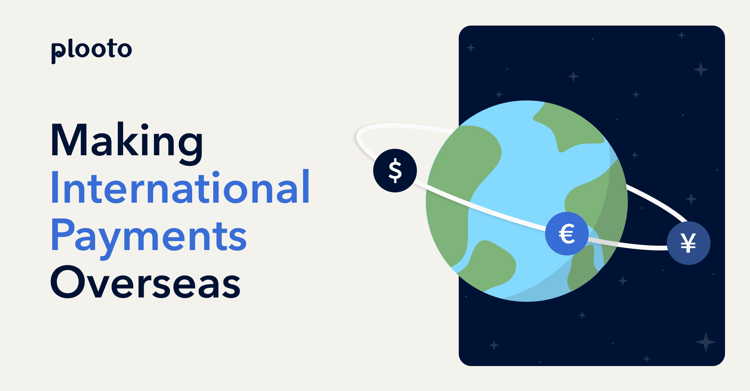
This is an update to the original blog posted in May 2019. Updates were made to include more relevant information and new links.
In today’s global economy, it’s only a matter of time until businesses need to buy from or sell to an international company. While our economic system has changed to the point where businesses have customers and suppliers all around the world, our payment systems have not evolved to match.
It can be confusing, time-consuming, and labor-intensive to pay an international vendor and supplier. Thankfully, some new options are emerging. If your clients need to pay an international vendor or supplier, here are some of the different considerations and options you have.
What is considered an international business transaction?
A deal between parties from two or more countries constitutes an international business transaction.
What are the main forms of international payments?
The most common methods of payment in international trade include cash In advance, open account terms, consignment, documentary collection, and letters of credit.
How long does an international payment take?
International bank transfers typically take one or two days but can take as long as five depending on the currency. For example, US dollars and euros are normally quicker than weaker currencies.
What to consider when making international payments to an overseas vendor or supplier
- Agree on payment currency with vendor or supplier
- Choose an International Payment Option
- What You Need to Look for in an International Payment Provider
- Gather Information for an International Payment
- Reconcile Payments in your Accounting Software
1. Agree on payment currency with vendor or supplier
Chances are, you have already agreed on pricing if you are about to make a payment. However, when you pay an international vendor or supplier, you will also need to agree on the currency. You will need to pay the outlined currency on the invoice, which is usually the supplier or vendor’s home currency. However, there could be situations where you want to choose a different currency or pay in your own home currency. Make sure you clarify the payment currency with the organization you are doing business with, and that this is reflected on the invoice.
2. Choose an international payment option
The most common way to pay international invoices is through bank wire transfers. However, banks charge extremely high fees for wires, and they do not provide competitive exchange rates. They also require the person with signing authority to make a trip to the physical bank branch and fill out paperwork, which is very time consuming. Credit unions are another option for sending international payments, and these institutions charge less than banks. There are also online payment providers, which charge significantly less than banks and reduce the manual effort required to make the payment. For instance, Plooto helps businesses make payments online for competitive fees and rates, and it doesn't require the payee to collect several pieces of information from the vendor ahead of time.
3. What you need to look for in an international payment provider
- When you are comparing payment options, look at the following criteria:
Available currencies - Fees
- Exchange rates
- Payment options (one-time, recurring, etc.)
- Payment speed
- Automation or reconciliation capabilities
Rank your clients' needs, and evaluate the different providers to determine which one provides the features that matter most to your clients and to you.
4. Gather information for an international payment
Depending on the payment option you choose, you will need different pieces of information from the business you want to pay. If you make your payment through the bank, you will need the following info:
- Account holder name and full address
- Bank account number
- Branch number and full address
- Institution number
- Swift Code / BIC / IBAN code
- Routing Number (international)
If you are making a payment through an online provider, you will likely only need the name and email address for the business you are paying. Using Plooto, the payment recipient receives an email, they enter their account details, and the money is transferred.
5. Reconcile payments in your accounting software
The final step to making an international payment is to reconcile the payment in your accounting software. With most payment types, you will need to perform this action in your accounting software manually; however, some online payment providers will automatically do the reconciliation for you, which saves you time.
Whether you have an ongoing relationship with an overseas vendor or you are just getting started with international payments, it is best to find a payment channel that offers cost savings and convenience. Do your research to find the right option for you and your vendor.
Try Plooto, free for 30-days and experience first hand the ease and low cost of sending international payments.
CHAPTERS
00 Best Way to Send International Payments: Stress-Free and Low Cost
01 Things to Consider When Making International Payments
02 An International Payment Solution in the New Digital Norm
.png?width=2240&name=Interested%20in%20taking%20advantage%20of%20a%20B2B%20payment%20solution_%20(2).png)












